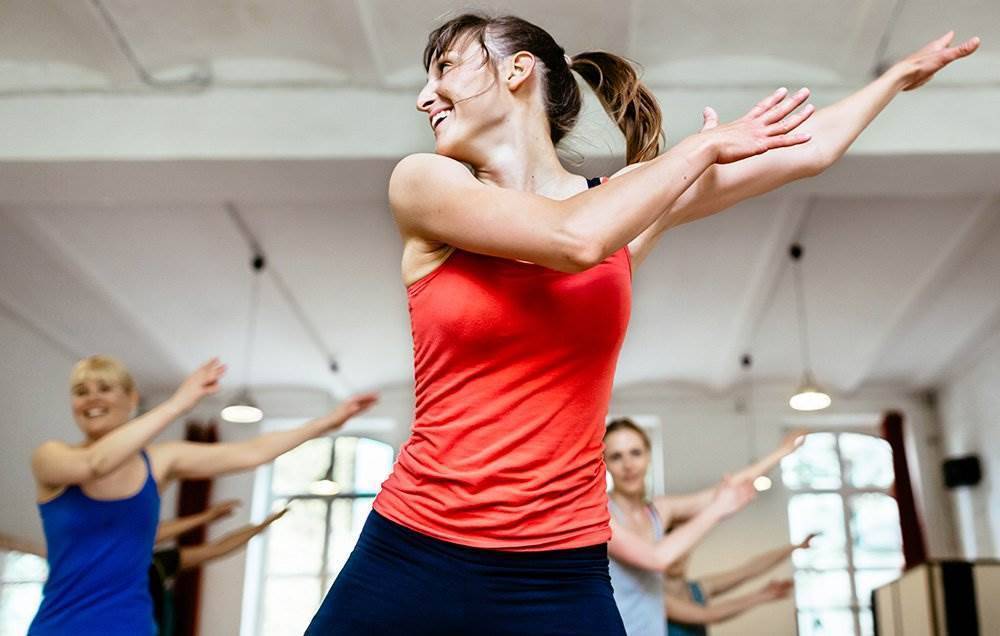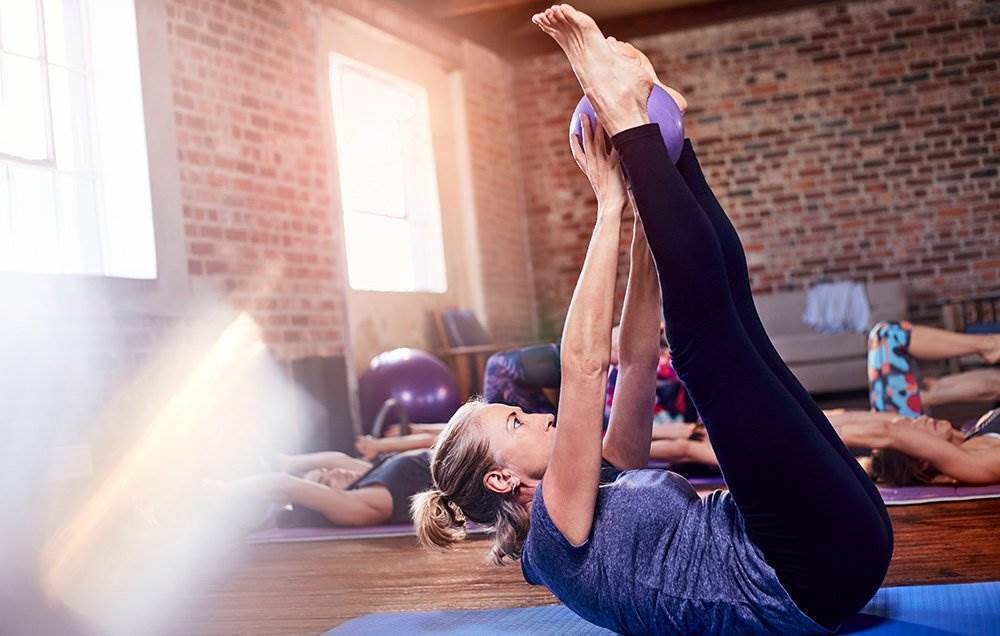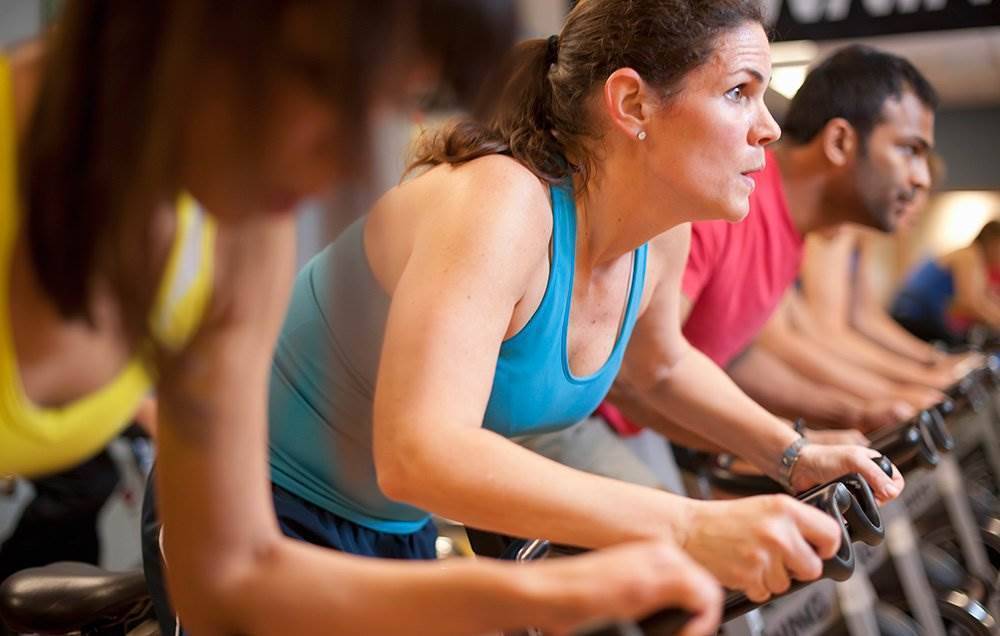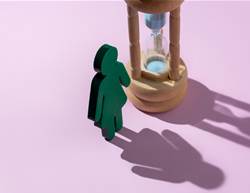When you were in your 20s and 30s you had big plans: You were on track to be a 99-year-old yoga teacher, an octogenarian bodybuilder, or, at the very least, that grey-haired lady at your gym who seems stronger and fitter than half of the younger people in the room. And then you hit your 40s, and something changed.
Maybe it’s taking you longer to recover from your usual workouts. Or suddenly your chiseled abs are lost in a softening middle. Or you just can’t seem to motivate yourself to get to the gym anymore.
Sound familiar? It’s not just you. Growing older and the hormonal fluctuations related to perimenopause can change the fitness game. This shift doesn’t hit everyone the same exact way, or to the same degree. But it helps to know what's happening and what you can do about it.







Getty
Your workouts are no long allowing you to keep your weight steady.
You’re sweating it out in the gym as much as you always have, and you haven’t changed your diet. Yet somehow you’re gaining belly fat, the kind linked to health issues like diabetes and heart disease. What’s going on?
“Even women who are athletes, who eat right and work out, they’re at their wits end,” says nutrition and fitness coach Miriam Amselem. “They say, 'I’m doing the same stuff I always have. Why am I gaining weight?'”
Well for one thing, there’s your slowing metabolism, which happens as you get older thanks to a decline in human growth hormone (HGH). More specific to perimenopause, however, is that as your oestrogen levels decline, certain proteins cause your fat cells to store more fat.
But don’t throw in the towel. There’s growing evidence that you can fight back - and slay those hot flashes - by eating a healthy diet and exercising regularly. Psychiatrist Dr Rebecca Thurston says research shows that women who manage to avoid gaining weight (or who don't gain as much) through perimenopause and beyond are the ones who stay physically active - but the kind of exercise you do as well as the amount matters. (Keep reading for tips!)
Getty
Your long, hard cardio workouts are backfiring on you.
Spin classes and long weekend runs used to keep you lean. Now? Not so much. Time to reduce your kilojoules and do even more cardio, right? Well, maybe not. “Most women believe the right approach is to exercise more and eat less, but that results in an even more increased stress response,” says nutrition and fitness coach Ariane Hundt. Lower oestrogen can make perimenopausal women more sensitive to stress, which can raise cortisol levels and lead to packing on the kilos around your waist.
“Doing steady cardio and working out hard most days of the week can really drive cortisol, which contributes to inflammation and belly fat,” warns naturopathic doctor Tyna Moore. She says the best strategy is to shift your focus to building lean muscle mass and resting. Yes, resting - more on that later.
Getty
You’re losing muscle mass.
If your abs seem to be disappearing and your pull-ups feel like they're getting harder to perform, it may not be your imagination.
Both women and men lose muscle and bone mass as they grow older. This is called sarcopenia, and it can also slow down your metabolism. It begins in your 30s and accelerates once you hit 40. Inactive adults lose 3-5% of their muscle mass and function each decade. Active people experience some sarcopenia, too, but the good news is it’s not as severe if you’re working out regularly.
Getty
You're more exhausted than ever.
There may be mornings when you wake up feeling like your usual workout is absolutely, positively not happening today. On top of that, when you do make it to the gym, you may get tired more quickly and take longer to recover.
Fluctuating oestrogen can cause what’s known as “crashing fatigue” - meaning exhaustion hits you suddenly, out of the blue - says certified trainer Amanda Thebe, who specialises in helping women in their 40s and beyond. Meanwhile, perimenopausal women often have trouble sleeping, and sleep disturbances can make you feel wiped and mess with your fitness program, adds Thurston.
The fix, says Thebe, is to provide your body with the rest it craves, which might mean building more rest days into your exercise schedule. It may seem counterintuitive, but giving yourself more rest time can make your workouts more effective.
Getty
What are the best workouts for perimenopause?
Now you know what not to do - burning out at the gym, constant cardio, neglecting rest. Here, two types of workouts you be doing instead:
1. Strength training
If you’re not doing it already, start now. It's key to fighting off muscle and bone loss, or at least slow it down. Plus it helps boost your metabolism (even when you're at rest), as well as optimise your hormones, which should ease perimenopause symptoms, says Moore.
Try to get in two to three 30-40 minute strength sessions a week. "Aim to move heavier weights and focus on intensity,” rather than number of reps, says celebrity trainer and 40-something athlete Ashley Borden. Amselem agrees: “Your purse weighs 10 kilos, so I know you can lift at least 10 kilos in the gym," she says.
Borden, Thebe and Moore all recommend multi-joint compound movements including deadlifts, squats, bent over rows, and overhead barbell presses. “Hiring a good coach to emphasise proper form and safety is absolutely key in my medical opinion,” adds Moore.
>
Getty
2. Quick HIIT
High intensity interval training (HIIT) is the other favorite workout trainers choose for their perimenopausal clients. Mixing bursts of intense activity with recovery periods is a great way to boost mood, improve cardiovascular health, build resilience, increase strength, and keep you from getting bored. It also helps glucose get absorbed by your muscles (where it can be quickly metabolised) rather than by fatty tissue, and it may even raise human growth hormone levels.
Just don't overdo it. “Short and intense workouts, such as 20-minute HIIT sessions, are ideal, as they allow enough stimulation of adrenals and short-term release of cortisol to stimulate fat release from the cells,” says Hundt. She likes to follow up these workouts (and strength training workouts) with around 20 minutes of relaxed walking immediately after. (Check out these health benefits you get from walking 30 minutes a day.) “Not only will this bring down the stress response, but the lower intensity cardio allows the body to burn off the fat that was released into the bloodstream during the [more intense] workout.”
Getty
Aim for balance.
If your schedule allows, it's also smart to work in some moderate activity like walking, causal biking, hiking, yoga, and mobility exercises a couple days a week. Or try meditation. "It's key for keeping the central nervous system calm and your hormones happy," says Moore.
Above all, keep the big picture in mind, and don't panic if you can't manage to stay as thin or as toned as you were when you were younger. “I’m no longer a perfect size 10, which is fine," says Amselem. "Being fit and strong is more important than anything else.”







.png&h=193&w=250&c=1&s=1)

